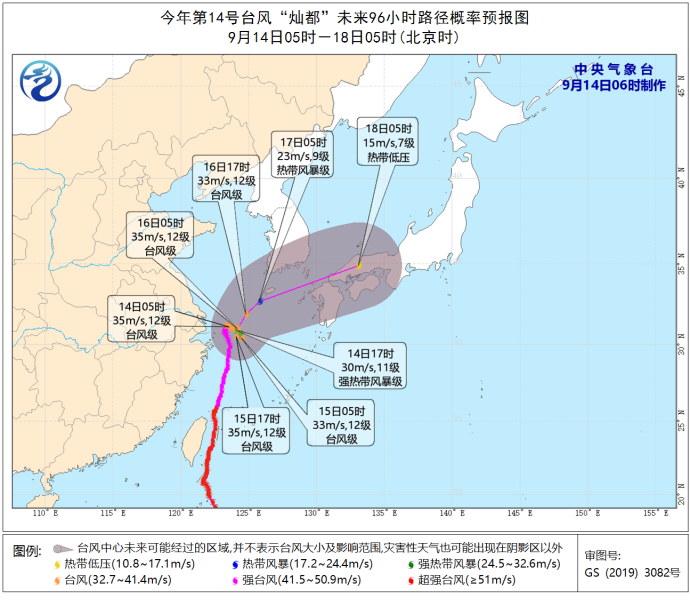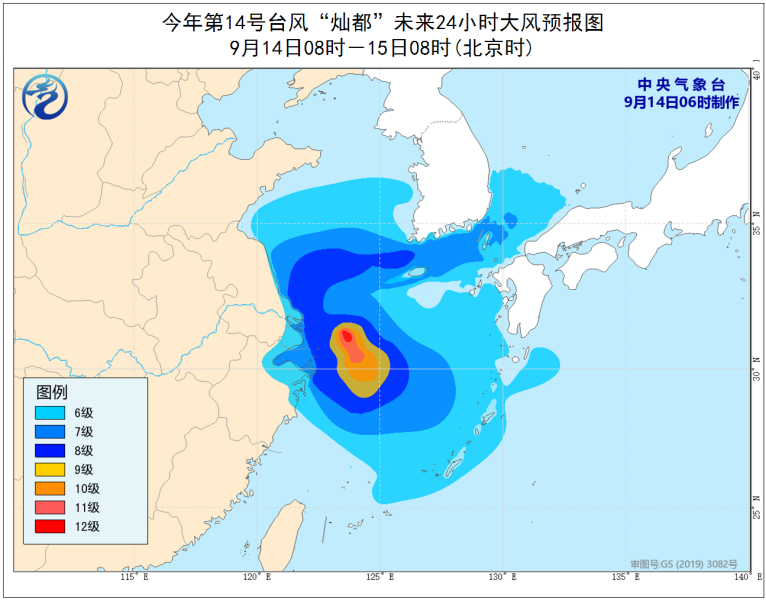Candu has weakened to typhoon level: it will swing in the East China Sea today and the wind can reach 10 in some areas.
Cctv newsAccording to the website of the Central Meteorological Observatory,The Central Meteorological Observatory issued a yellow warning for typhoon at 6: 00 on September 14th:
The 14th typhoon "Candu" this year weakened from a strong typhoon level to a typhoon level in the early morning (14th). At 5 o’clock in the morning, its center was located on the sea about 205km east of Shanghai, that is, 31.1 degrees north latitude and 123.6 degrees east longitude. The maximum wind force near the center was 12 (35m/s), the lowest pressure in the center was 970 hectopascals, and the radius of the seven-level wind circle was 220-220.
It is estimated that "Candu" will swing in the northwestern part of the East China Sea from 14th to 15th, with little change in intensity. On 16th, it will turn to the northeast, and will cross the Korean Strait to approach the northern coast of Japan, with its intensity gradually weakening.
Gale forecast:From 08: 00 on the 14th to 08: 00 on the 15th, there will be 6-8 winds in the central and southern Yellow Sea, most of the East China Sea, the northern coastal areas of Zhejiang, the coastal areas of Shanghai, Jiangsu, Hangzhou Bay and the Yangtze River estuary, 9-10 winds in some sea areas or regions, 11-12 winds and 13-14 gusts in the waters near the typhoon center.
Precipitation forecast:From 08: 00 on the 14th to 08: 00 on the 15th, there were moderate to heavy rains and local heavy rains (50-70 mm) in parts of eastern Shanghai and coastal areas in northeastern Zhejiang.
Defense guide:
1. The government and relevant departments shall, in accordance with their duties, do a good job in typhoon prevention and emergency rescue.
2. Water operations and passing ships in relevant waters should return to Hong Kong to take shelter from the wind, strengthen port facilities, and prevent ships from anchoring, grounding and collision.
3. Stop large-scale indoor and outdoor gatherings and dangerous outdoor operations such as high altitude.
4. Reinforce or dismantle structures that are easy to be blown by the wind. Personnel should not go out at will. They should stay in windproof and safe places as far as possible, so as to ensure that the elderly and children stay in the safest place at home, and the dangerous people will be transferred in time. When the typhoon center passes by, the wind will decrease or stay still for a period of time. Remember that the strong wind will suddenly blow, and you should continue to stay in a safe place to avoid the wind, and the dangerous people will be transferred in time.
5. Relevant areas should pay attention to prevent flash floods and geological disasters that may be caused by heavy precipitation.

